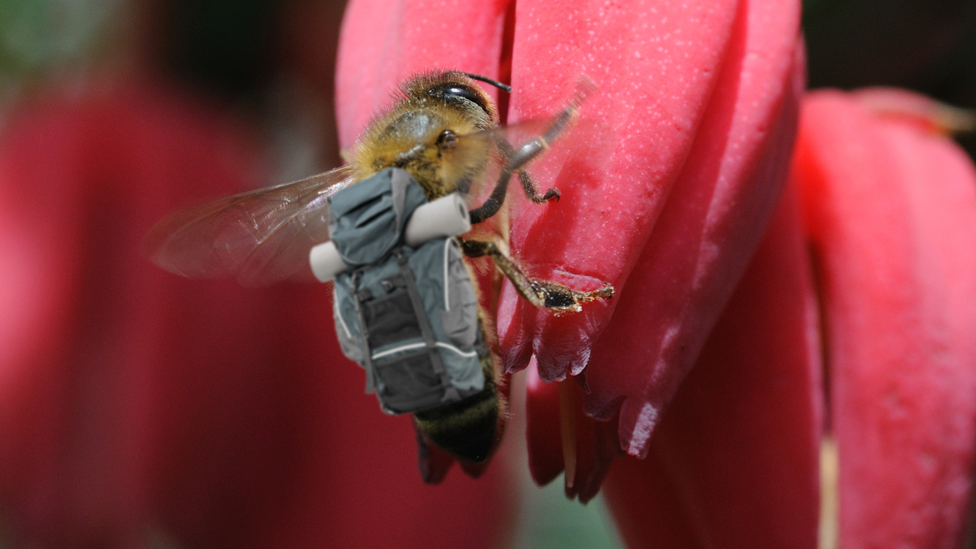Bangor University's bee 'backpacks' could give decline clues
- Published

The new tracking device will be carried on a bee's back like a backpack - although not exactly like this one...
Tiny "backpacks" for bees to track their flight paths could help provide clues about why the species is in decline, Bangor University experts say.
Populations of the insect - which are essential fruit and crop pollinators - are being killed by insecticides.
Current tracking devices are often too heavy for the bees to carry far.
So the team in Bangor, Gwynedd,, external is creating a smaller tracker that does not use a battery, instead harnessing the power of the bee's wings.
Dr Paul Cross, senior lecturer in the environment, said current devices - which weigh more than the bee - make it difficult to track the insects over their entire foraging range.
By removing the heaviest part - the battery - the tracking device would be the size of a match head and weigh less than two grains of rice - a third of the body weight of a bee.

The tracker will record data when a bee flies from flower to flower
It would be carried on the back of a bee, allowing the team to follow its transmitted signal with a mobile receiver.
The new device would also resolve the problem of longevity, as current transmitters are limited by the battery lifetime.
Dr Cross said: "This really would be akin to a bee wearing a rucksack - as opposed to carrying the equivalent of the kitchen table and chairs as at present."
He added: "The ability to track bees or other insects over their entire range will be useful in various circumstances.
"Neonicotinoids and other insecticides, for example, affect the bee's ability to navigate.
'Stuck on'
"The ability to track them over long distances can help us work out how the neonicotinoids are affecting their direction finding."
Dr Cross has teamed up with Dr Cristiano Palego, senior lecturer in smart sensors and instrumentation at the university, to create the new tracker.
Dr Palego said the device was in its early stages and the team was looking into how the bee would carry the tracker on its back.
He said other monitors are stuck onto the bee with glue.
- Published24 March 2015
